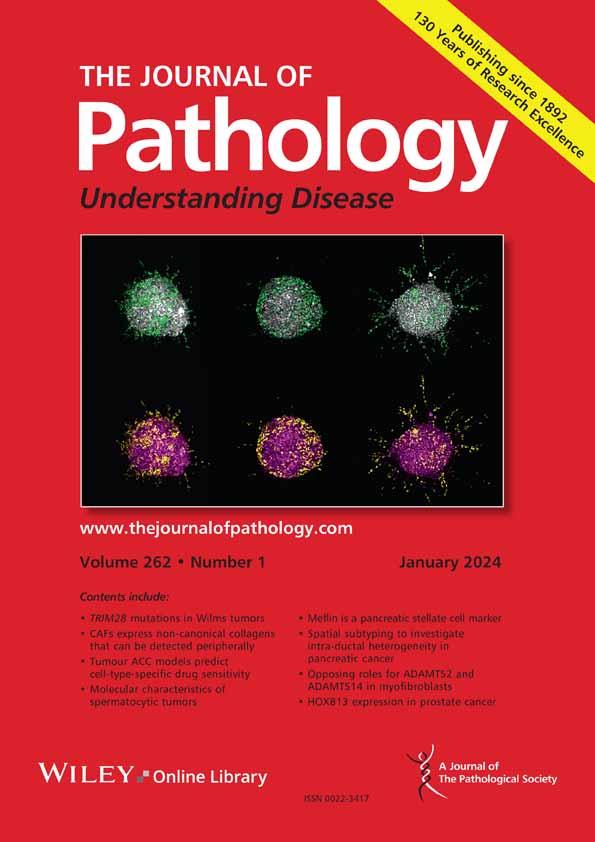求助PDF
{"title":"利用适体在疾病治疗的靶向蛋白质降解策略","authors":"Lin Li, Songbo Xie, Jun Zhou, Jie Ran","doi":"10.1002/path.6422","DOIUrl":null,"url":null,"abstract":"<p>Targeted protein degradation (TPD) has emerged as a promising therapeutic strategy, offering the potential to reduce disease-causing proteins that have traditionally been challenging to target using conventional small molecules. Despite significant advances made with TPD technologies, challenges such as high molecular weight, difficulties in identifying suitable ligands, suboptimal absorption, and metabolic instability remain unresolved. Recently, aptamers – single-stranded DNA or RNA oligonucleotides known for their high specificity and affinity for protein targets – have introduced novel opportunities to expand the scope of TPD, a strategy now referred to as aptamer-based TPD. This approach has demonstrated considerable promise in treating various diseases, such as cancer and ocular disorders. For example, an aptamer-proteolysis-targeting chimera (PROTAC) conjugate (APC) improved tumor targeting and reduced toxicity in a breast cancer model, and a vascular endothelial growth factor-degrading (VED)-lysosome-targeting chimera (LYTAC) molecule effectively inhibited abnormal vascular growth in vascular retinal diseases. These examples highlight the practical relevance and potential in advancing drug discovery efforts. In this review we provide a comprehensive overview of the latest advances in aptamer-based TPD strategies, including proteolysis-targeting and lysosome-targeting chimeras, emphasizing their applications, potential therapeutic benefits, as well as the challenges that must be overcome to fully harness their clinical potential. © 2025 The Pathological Society of Great Britain and Ireland.</p>","PeriodicalId":232,"journal":{"name":"The Journal of Pathology","volume":"266 2","pages":"134-143"},"PeriodicalIF":5.2000,"publicationDate":"2025-04-10","publicationTypes":"Journal Article","fieldsOfStudy":null,"isOpenAccess":false,"openAccessPdf":"","citationCount":"0","resultStr":"{\"title\":\"Utilizing aptamers in targeted protein degradation strategies for disease therapy\",\"authors\":\"Lin Li, Songbo Xie, Jun Zhou, Jie Ran\",\"doi\":\"10.1002/path.6422\",\"DOIUrl\":null,\"url\":null,\"abstract\":\"<p>Targeted protein degradation (TPD) has emerged as a promising therapeutic strategy, offering the potential to reduce disease-causing proteins that have traditionally been challenging to target using conventional small molecules. Despite significant advances made with TPD technologies, challenges such as high molecular weight, difficulties in identifying suitable ligands, suboptimal absorption, and metabolic instability remain unresolved. Recently, aptamers – single-stranded DNA or RNA oligonucleotides known for their high specificity and affinity for protein targets – have introduced novel opportunities to expand the scope of TPD, a strategy now referred to as aptamer-based TPD. This approach has demonstrated considerable promise in treating various diseases, such as cancer and ocular disorders. For example, an aptamer-proteolysis-targeting chimera (PROTAC) conjugate (APC) improved tumor targeting and reduced toxicity in a breast cancer model, and a vascular endothelial growth factor-degrading (VED)-lysosome-targeting chimera (LYTAC) molecule effectively inhibited abnormal vascular growth in vascular retinal diseases. These examples highlight the practical relevance and potential in advancing drug discovery efforts. In this review we provide a comprehensive overview of the latest advances in aptamer-based TPD strategies, including proteolysis-targeting and lysosome-targeting chimeras, emphasizing their applications, potential therapeutic benefits, as well as the challenges that must be overcome to fully harness their clinical potential. © 2025 The Pathological Society of Great Britain and Ireland.</p>\",\"PeriodicalId\":232,\"journal\":{\"name\":\"The Journal of Pathology\",\"volume\":\"266 2\",\"pages\":\"134-143\"},\"PeriodicalIF\":5.2000,\"publicationDate\":\"2025-04-10\",\"publicationTypes\":\"Journal Article\",\"fieldsOfStudy\":null,\"isOpenAccess\":false,\"openAccessPdf\":\"\",\"citationCount\":\"0\",\"resultStr\":null,\"platform\":\"Semanticscholar\",\"paperid\":null,\"PeriodicalName\":\"The Journal of Pathology\",\"FirstCategoryId\":\"3\",\"ListUrlMain\":\"https://pathsocjournals.onlinelibrary.wiley.com/doi/10.1002/path.6422\",\"RegionNum\":2,\"RegionCategory\":\"医学\",\"ArticlePicture\":[],\"TitleCN\":null,\"AbstractTextCN\":null,\"PMCID\":null,\"EPubDate\":\"\",\"PubModel\":\"\",\"JCR\":\"Q1\",\"JCRName\":\"ONCOLOGY\",\"Score\":null,\"Total\":0}","platform":"Semanticscholar","paperid":null,"PeriodicalName":"The Journal of Pathology","FirstCategoryId":"3","ListUrlMain":"https://pathsocjournals.onlinelibrary.wiley.com/doi/10.1002/path.6422","RegionNum":2,"RegionCategory":"医学","ArticlePicture":[],"TitleCN":null,"AbstractTextCN":null,"PMCID":null,"EPubDate":"","PubModel":"","JCR":"Q1","JCRName":"ONCOLOGY","Score":null,"Total":0}
引用次数: 0
引用
批量引用






 求助内容:
求助内容: 应助结果提醒方式:
应助结果提醒方式:


